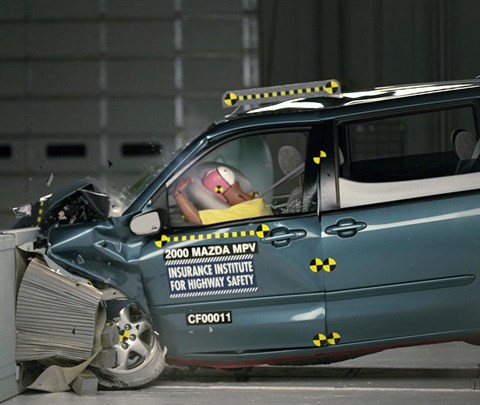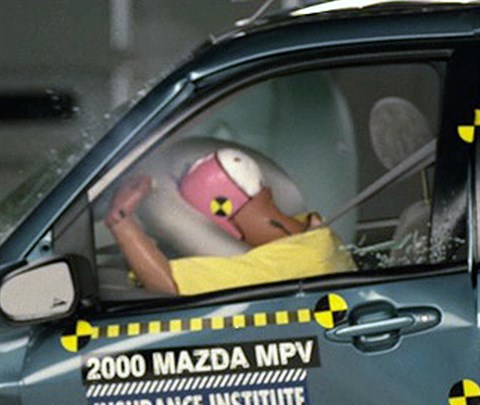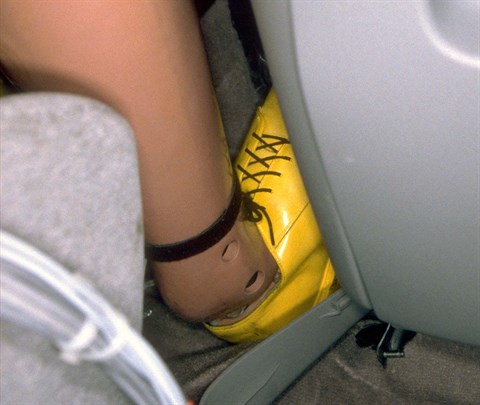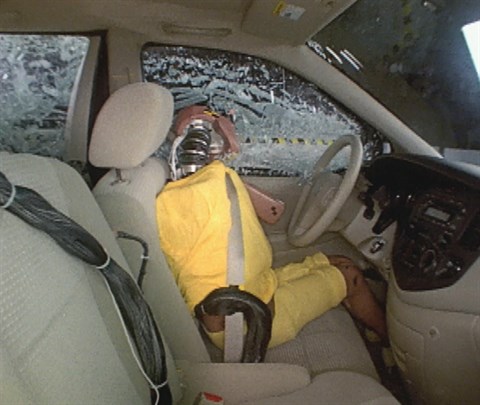Moderate overlap front: original test
Rating applies to 2000-06 models
Tested vehicle: 2000 Mazda MPV LX van
The Mazda MPV was redesigned for the 2000 model year.
| Evaluation criteria | Rating |
|---|---|
| Overall evaluation | |
| Structure and safety cage | |
| Driver injury measures | |
| Head/neck | |
| Chest | |
| Leg/foot, left | |
| Leg/foot, right | |
| Driver restraints and dummy kinematics | |

Action shot taken during the frontal offset crash test.

The dummy's position in relation to the steering wheel and instrument panel after the crash test indicates that the driver's survival space was maintained reasonably well.

Forces on the head and neck when the dummy loaded the airbag were moderately high, indicating the possibility of head and neck injuries.

Footwell intrusion contributed to the likelihood of injury to the lower right leg.
Side: original test
Rating applies to 2000-06 models
Tested vehicle: 2005 Mazda MPV LX van without optional side airbags
The Mazda MPV was redesigned for the 2000 model year.
| Evaluation criteria | Rating |
|---|---|
| Overall evaluation | |
| Structure and safety cage | |
| Driver injury measures | |
| Head/neck | |
| Torso | |
| Pelvis/leg | |
| Driver head protection The dummy's head was hit by the intruding barrier. This hit did not produce high head injury measures, but head hits with intruding objects such as other vehicles, trees, and poles should be prevented. The high neck injury measures were recorded before the barrier hit the head. | |
| Rear passenger injury measures | |
| Head/neck | |
| Torso | |
| Pelvis/leg | |
| Rear passenger head protection The dummy's head was hit by the window sill of the rear passenger door. This impact did not produce high head injury measures, but the head protection is inadequate. | |

View of the vehicle and barrier just after the crash test.

View of the vehicle after the crash with doors removed, showing the damage to the occupant compartment.

Action shot taken during the side impact crash test showing the driver dummy's head being hit by the intruding barrier.

Smeared red greasepaint indicates where the driver dummy's head hit the barrier.
Head restraints & seats
Seat type: All seats
| Overall evaluation | |
|---|---|
| Dynamic rating | |
| Seat/head restraint geometry |
About the head restraint & seat test
Currently, IIHS tests apply only to front seats.